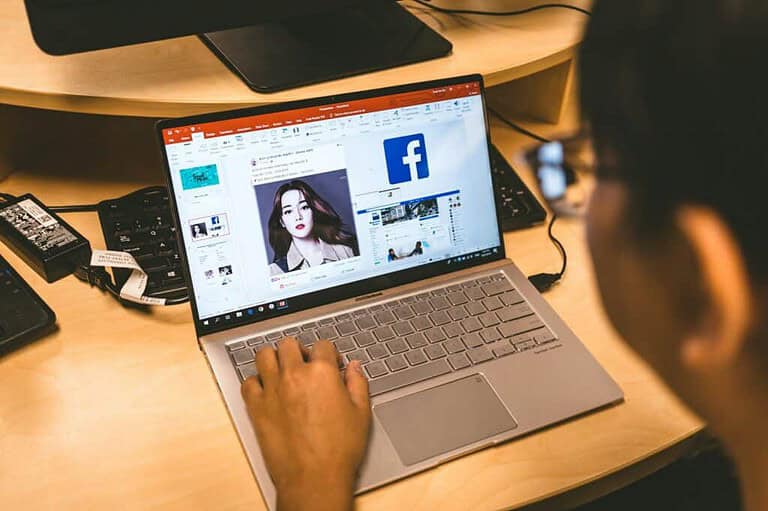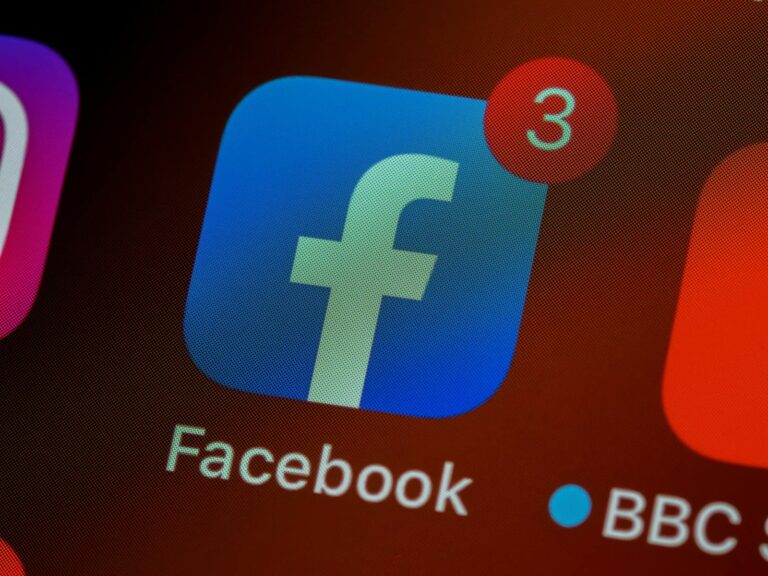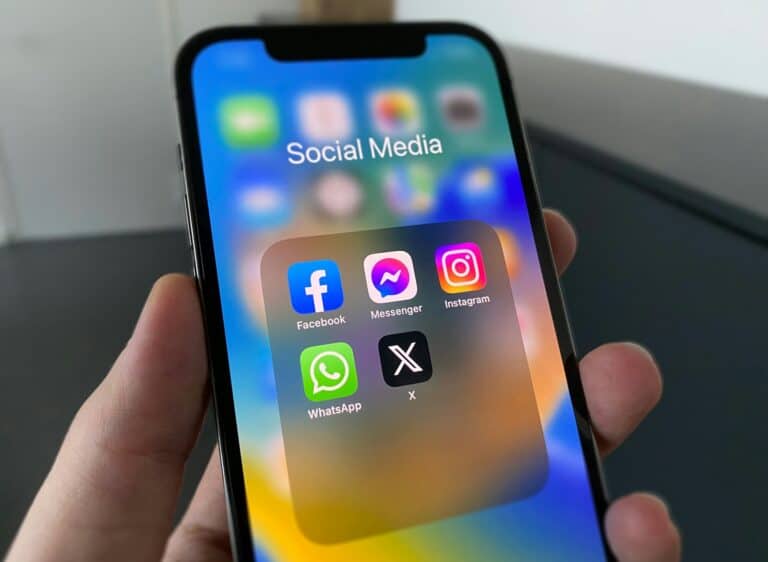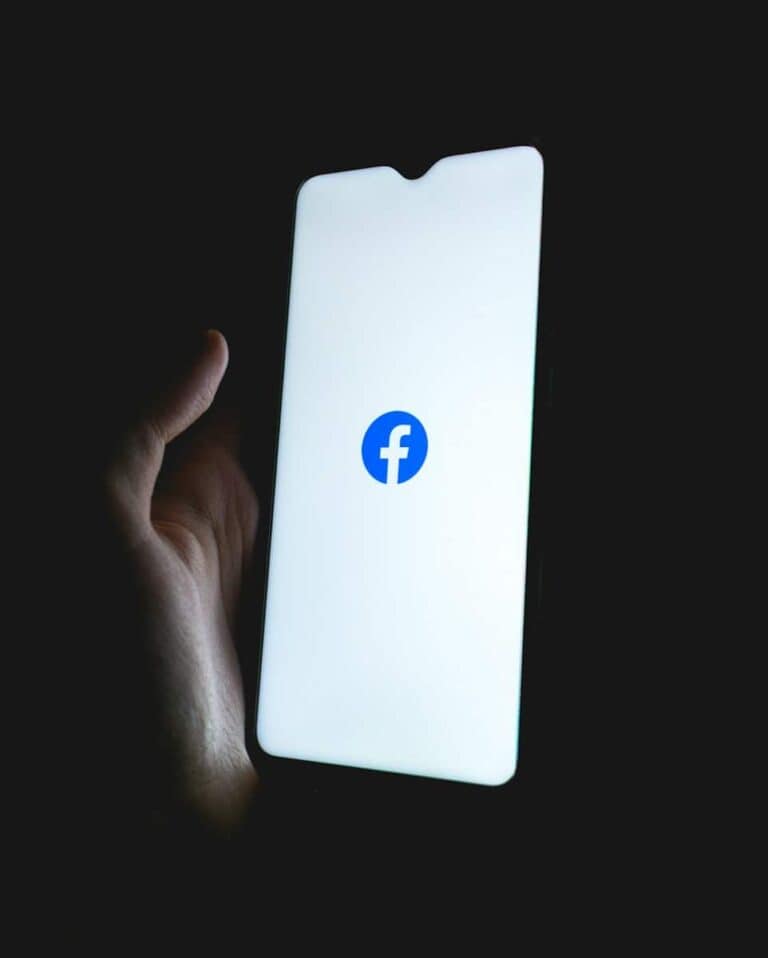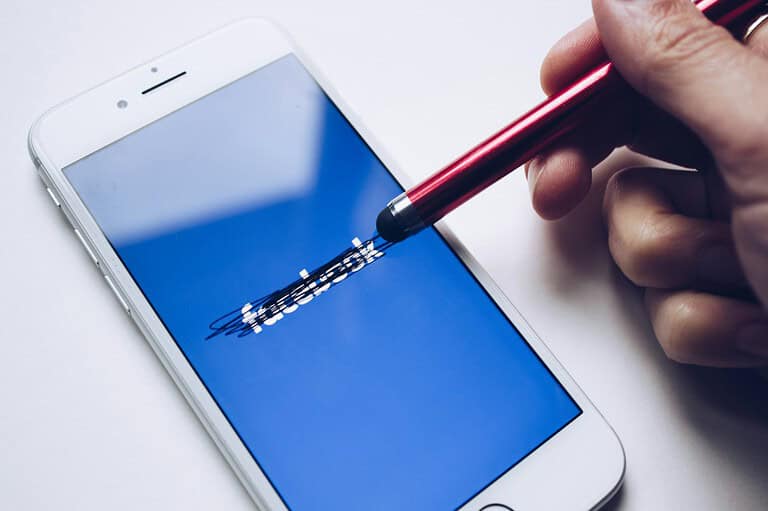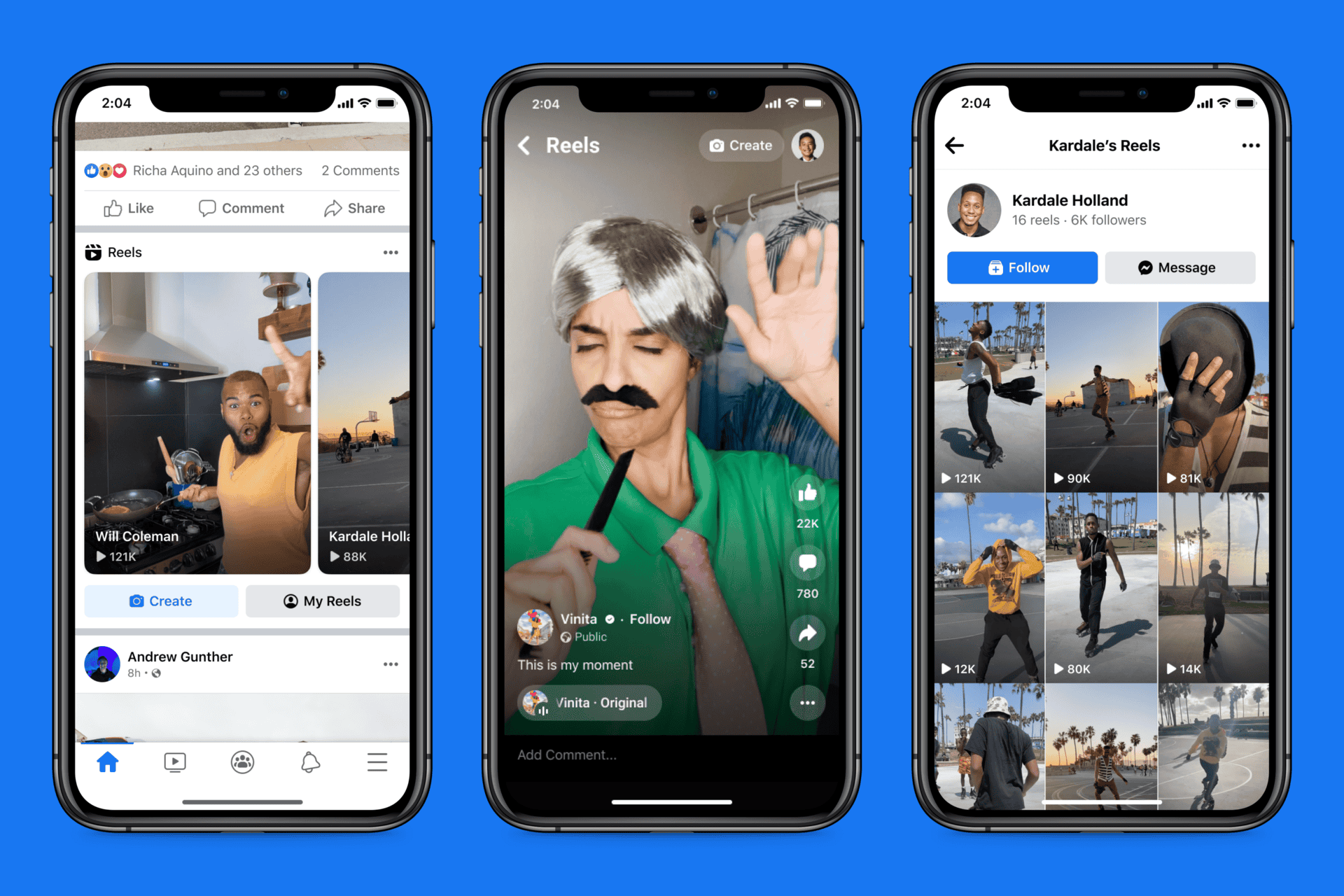
Having trouble with Facebook’s 6-digit verification code? It’s a common frustration that can lock you out of your account when you need access most. Many users face issues where the code doesn’t arrive, expires too quickly, or simply doesn’t work when entered.
If your Facebook 6-digit verification code isn’t working, first check that you entered the correct phone number, then try requesting a new code, or switch to email verification instead. Sometimes Facebook’s system temporarily blocks new codes after too many attempts, so waiting 24 hours before trying again can resolve the issue.
Don’t worry if you’re still having trouble – there are several effective solutions. Whether you’re dealing with network issues, outdated app versions, or account security measures, understanding why these codes fail is the first step to regaining access to your account.
The 6-digit code is usually sent by SMS, email, or an authenticator app. If it doesn’t work, follow these steps:
✅ Step 1: Double-Check the Code
- Make sure you’re entering the latest code (they expire quickly, usually in 30–60 seconds).
- If using an authenticator app (Google Authenticator, Authy, Duo), refresh the code and try again.
- If using SMS/email, wait for the new code and don’t reuse an old one.
✅ Step 2: Check Your Internet & Device Settings
- Ensure your iPhone/iPad/Android or computer is connected to a stable internet connection.
- If using an authenticator app, make sure your device’s date & time are set automatically (wrong time = invalid codes).
✅ Step 3: Try Different Code Delivery Methods
- On the Facebook login screen, click “Need another way to authenticate?” or “Didn’t get a code?”.
- Options may include:
- Send code by SMS
- Send code by email
- Use your authenticator app
- Use recovery codes (if you saved them earlier)
✅ Step 4: Clear Cache or Try Another Browser/App
- If you’re on the Facebook app, update it to the latest version.
- Try logging in via a different browser (Chrome, Safari, Edge).
- Clear browser cache/cookies if the login page keeps rejecting codes.
✅ Step 5: Use Trusted Devices or Locations
- If you’ve logged in before on a device, Facebook may let you bypass the code.
- Try logging in from your home Wi-Fi or a device you’ve used before.
✅ Step 6: Recover Your Account
If none of the above works:
- Go to the Facebook Login Help page
- Select “Need help?” and follow the steps to verify your identity.
- You may need to upload an ID to regain access.
🚫 Common Reasons the Code Fails
- Entering an expired code.
- Wrong time/date on your phone.
- Network delays in receiving SMS/email.
- Outdated Facebook app.
🔧 Quick Recap
- Use the latest code (refresh if needed).
- Check internet + device time settings.
- Try SMS, email, or authenticator app.
- Use a different browser or update the app.
- Try a trusted device/location.
- If stuck → Recover account via Facebook Help.
Key Takeaways
- Check your phone number accuracy and try alternative verification methods like email when Facebook codes aren’t being received.
- Facebook may temporarily block verification attempts after multiple failed tries, requiring a 24-hour waiting period.
- Keep your Facebook app updated and ensure your device has proper network connectivity to receive verification codes reliably.
Understanding Facebook’s 6-Digit Code
Facebook’s verification system uses numeric codes as a security measure to protect user accounts from unauthorized access. These codes serve as a critical layer of protection in today’s digital landscape where account security is increasingly important.
What Is the 6-Digit Code?
The 6-digit code is a temporary numeric verification code that Facebook sends to users during login attempts or account recovery processes. This code typically appears as a six-number sequence (like 123456) that users must enter to prove their identity.
The code is usually delivered through:
- SMS text message to your registered phone number
- Email to your registered email address
- Authentication apps like Google Authenticator
These codes are time-sensitive and typically expire after a short period (usually 5-10 minutes). This expiration feature enhances security by ensuring that even if someone intercepts your code, they have limited time to use it.
When logging in from a new device or location, Facebook’s security system will often trigger this verification step to confirm it’s really you attempting to access the account.
Role of Two-Factor Authentication
Two-factor authentication (2FA) is a security process that requires users to provide two different authentication factors to verify their identity. The 6-digit code serves as the second factor in this process.
The authentication process typically works through:
- First factor: Something you know (your password)
- Second factor: Something you have (your phone receiving the 6-digit code)
This dual-layer approach significantly improves account security. Even if someone discovers your password, they cannot access your account without also having access to your phone or email to receive the verification code.
Facebook allows users to set up 2FA through their security settings. Once enabled, the system will request the verification code during suspicious login attempts or when accessing the account from unrecognized devices.
The Significance of Identity Verification
Identity verification through 6-digit codes helps Facebook maintain platform integrity and protects users from potential security breaches. When users receive a verification code not working message, it often indicates security systems working as designed.
These security measures help prevent:
- Account hijacking: Unauthorized users gaining access to accounts
- Identity theft: Criminals impersonating legitimate users
- Data breaches: Unauthorized access to personal information
For businesses and public figures, identity verification is particularly critical as account compromise could lead to reputational damage or financial loss. Facebook’s verification system creates a barrier against potential hackers and scammers.
The verification process also helps Facebook comply with regulatory requirements around user privacy and data protection. By ensuring only legitimate users can access accounts, the platform maintains trust with its user base and regulatory bodies.
Troubleshooting Common Issues
When Facebook’s verification system fails, there are several specific points of failure that users commonly encounter. These issues often relate to delivery methods, device compatibility, and problems with authentication apps.
Issues Receiving the Code via Text Message
If you’re not receiving the 6-digit code via text message, first check your phone’s signal strength. Poor reception can delay or block verification messages.
Make sure your phone number is correctly entered in your Facebook settings. Even a single wrong digit will prevent delivery. To verify this, check your contact information in your account settings.
Facebook sometimes temporarily blocks sending new verification codes if you’ve made too many attempts. Wait 24 hours before trying again.
Check if the text messages are being filtered as spam. Some carriers might block automated messages. You can also turn on Facebook text in your settings to help resolve SMS delivery issues.
Try requesting the code via email or another method if texts aren’t working. Facebook typically offers alternative delivery options during login.
Code Not Working on Different Devices
Verification issues often vary across different devices. Android users might face different problems than iPhone users when entering codes.
Ensure your device’s time and date settings are accurate. Authentication codes rely on time synchronization. Even a few minutes off can cause codes to be rejected.
Clear your browser cache and cookies if you’re trying to log in on a computer. Outdated browser data can interfere with the verification process.
Try using the mobile app instead of a browser or vice versa. Sometimes the issue is platform-specific and switching between them resolves the problem.
If you’re entering the code but receiving an error saying it’s incorrect, double-check for typos. The codes are time-sensitive and usually expire after a short period.
Problems with Authenticator Apps
Google Authenticator and other authentication apps can sometimes desynchronize with Facebook servers. If codes from your authenticator app aren’t working, try syncing the app.
To resync your authenticator app:
- Go to the app’s settings
- Look for a “Time correction for codes” option
- Select “Sync now”
If you’ve recently changed phones, your authenticator app might need to be set up again. The old codes won’t work on a new device without transferring the authentication settings.
Some users experience issues where they never had an option to set up the authenticator app properly. In this case, you’ll need to use Facebook’s account recovery options.
Check if your authenticator app needs an update. Outdated apps can generate incorrect codes or fail to connect properly.
Technical Fixes for Various Devices
Different devices may require specific troubleshooting steps when Facebook’s 6-digit verification codes aren’t working properly. The solutions vary based on operating systems and hardware configurations.
Android Devices
If you’re not receiving Facebook verification codes on your Android device, start by checking your internet connection. A stable connection is essential for receiving these codes.
Make sure the Facebook app is updated to the latest version. Outdated apps often have bugs that prevent verification codes from working properly. Go to Google Play Store, search for Facebook, and tap “Update” if available.
Clear the Facebook app cache by going to Settings > Apps > Facebook > Storage > Clear Cache. This removes temporary data that might be interfering with code delivery.
Check if your phone number is correctly listed in your Facebook account settings. Incorrect numbers will never receive verification codes. Also, ensure SMS permissions are enabled for the Facebook app in your device settings.
Some users report that Facebook verification codes don’t arrive on Android devices due to carrier restrictions. Try requesting the code via email instead.
iOS Devices
For iPhone and iPad users, verification code issues often stem from notification settings. Go to Settings > Notifications > Facebook and ensure all notifications are enabled.
Check if your device has the latest iOS update installed. Outdated operating systems can sometimes block security-related messages from apps like Facebook.
Restart your iOS device completely by holding the power button until “slide to power off” appears. After shutting down, wait 30 seconds before turning it back on.
Remove and reinstall the Facebook app if problems persist. This refreshes all app data and permissions. Remember to back up any important information before doing this.
Make sure your Apple ID is correctly configured and that iCloud messages aren’t filtering out Facebook’s texts. Some users find that authentication codes arrive in their iCloud message filtering system rather than as regular SMS.
Computer Hardware
On desktop and laptop computers, verification code problems often relate to browser settings. Clear your browser cache and cookies first. In Chrome, go to Settings > Privacy and Security > Clear browsing data.
Try using a different browser if codes still don’t arrive. Sometimes Facebook works better with certain browsers due to compatibility issues.
Check if any browser extensions or firewall settings might be blocking Facebook’s verification systems. Temporarily disable extensions and firewall protection to test.
For Mac users, ensure your system preferences allow notifications from your browser. Go to System Preferences > Notifications and check settings for your default browser.
If you’re receiving a message saying you’ve tried too many times, wait at least 24 hours before attempting again. Facebook’s system temporarily blocks verification code delivery after multiple failed attempts.
Advanced Solutions
When standard methods fail to resolve Facebook’s 6-digit code issues, several more technical approaches can help regain access to your account. These solutions address underlying problems with authentication systems and provide alternative verification methods.
Using Backup Codes
Facebook provides backup codes specifically for situations when you can’t receive the normal 6-digit verification code. These are one-time use codes that you should have saved when setting up your two-factor authentication.
To use backup codes:
- On the login screen where it asks for the 6-digit code, look for the “Need another way to authenticate?” option
- Select “Use a backup code” from the available options
- Enter one of your 8-digit backup codes
If you haven’t saved your backup codes, you can find them in your security settings while logged in on another device. Each backup code can only be used once, so it’s wise to store them securely.
Facebook typically provides 10 backup codes. Print them or store them in a password manager for emergencies.
Synchronizing Time Correction for Codes
Authentication codes are time-sensitive and depend on your device’s clock being correctly synchronized. Time discrepancies can cause 6-digit codes to fail even when entered correctly.
To fix time synchronization issues:
On Android:
- Go to Settings > System > Date & time
- Enable “Automatic date & time”
- Restart your device
On iOS:
- Go to Settings > General > Date & Time
- Enable “Set Automatically”
- Restart your device
On computers:
- Check your operating system’s time settings
- Enable automatic time synchronization
- Ensure the correct time zone is selected
This simple adjustment often resolves code verification problems immediately.
Resetting 2FA Settings
When all else fails, you may need to completely reset your Two-Factor Authentication settings. This approach requires identity verification but can solve persistent code delivery problems.
Begin by visiting Facebook’s specialized account recovery page. You’ll need to:
- Submit a form explaining your situation
- Provide identity verification (may require uploading ID)
- Wait for Facebook’s security team to review your case
For faster resolution, include details about previous login locations, devices, and friends you regularly interact with.
If your account uses SMS verification, try temporarily removing and reinserting your SIM card or contacting your mobile carrier to verify text messaging service is working properly.
Security Best Practices
While fixing Facebook 6-digit code issues is important, maintaining strong security practices can prevent many authentication problems from occurring in the first place. These preventative measures create a more secure account that’s less vulnerable to unauthorized access.
Updating Your Recovery Methods
Recovery methods are critical when dealing with verification issues. Facebook users should regularly check and update their recovery information including email addresses and phone numbers. Outdated contact information is one of the main reasons verification codes fail to arrive.
Users should:
- Add multiple recovery emails and phone numbers
- Remove any outdated contact information
- Verify all recovery options are accessible
- Consider adding trusted contacts as a backup method
When updating a phone number, users should ensure it can receive SMS messages. Some virtual phone numbers or VoIP services cannot receive verification texts, which leads to codes never arriving.
Ensuring Software and Apps Up-to-Date
Outdated software can interfere with Two-Step Verification processes. When Facebook’s 6-digit codes aren’t working, the problem might be with the applications or operating systems being used.
Important update practices include:
- Facebook app: Always use the latest version
- Authentication apps: Keep any third-party authenticators updated
- Operating system: Run the latest version of iOS, Android, or desktop OS
- Browsers: Update to recent versions with current security patches
Many verification code issues occur because outdated apps have bugs or compatibility issues with current security protocols. Particularly with authentication apps, outdated versions may generate codes that no longer sync properly with Facebook’s servers.
The Importance of Regularly Changing Passwords
Password management plays a crucial role in account security and can impact verification processes. Users experiencing frequent verification code issues should review their password practices.
Best password practices include:
- Change Facebook passwords every 3-6 months
- Use unique passwords (not shared with other accounts)
- Create complex passwords with letters, numbers, and special characters
- Consider using a password manager for better security
When changing passwords, users should immediately update all connected devices. Sometimes verification code problems occur because the system detects logins from unfamiliar locations or devices, triggering additional security measures.
Regular password changes reduce the likelihood of unauthorized access attempts that might trigger Facebook’s security systems to lock accounts or require additional verification.
Frequently Asked Questions
Facebook verification codes can sometimes fail to arrive or work properly. These issues may appear for different reasons, from network problems to account settings that need adjustment.
What steps can be taken if Facebook is not sending a verification SMS code for account recovery?
If Facebook isn’t sending verification codes via SMS, users should first check their phone number for accuracy. Sometimes a simple typo can prevent code delivery.
Users can also try to turn on Facebook text in their settings, which may resolve the issue.
If the problem persists, it’s worth trying an alternative verification method. Facebook often allows email verification as a backup option.
How can a user troubleshoot when they are not receiving the Facebook confirmation code by email?
When email codes aren’t arriving, users should check their spam or junk folders first. Email filters sometimes mistakenly flag verification messages.
Users can re-send the email code through the verification page. This often resolves temporary delivery issues.
Verifying the correct email address is registered to the account is also important. Outdated contact information can prevent code delivery.
What should be done if a Facebook login code is continuously received, but it remains invalid or not working?
Users facing invalid codes should ensure they’re entering the most recent code sent. Older codes expire quickly and won’t work.
If the system says you’ve tried too many times, Facebook may have temporarily blocked new verification attempts. Waiting for 24 hours before trying again often resolves this.
Clearing browser cookies and cache might help if the issue is browser-related.
Why might a user experience issues with Facebook’s two-factor authentication code not arriving, and how can it be resolved?
Network issues often prevent two-factor authentication codes from arriving. Switching between Wi-Fi and mobile data may help establish a better connection.
Some users find success by temporarily disabling two-factor authentication and then re-enabling it with updated contact information.
Device time settings that are incorrect can sometimes cause verification problems. Ensuring the device clock is synchronized to network time can fix this.
What solutions are available if Facebook’s system states ‘We can’t send a code right now’ during the verification process?
This error typically indicates a temporary system issue on Facebook’s end. Waiting for a few hours before trying again is often the best solution.
Using a different device or browser to request the code might bypass certain technical issues.
If the problem persists for more than 24 hours, users may need to contact Facebook support for specialized assistance.
Is there a way to recover a Facebook account when the 6-digit confirmation code is not functioning as expected?
Facebook offers alternative recovery methods, such as identifying photos of friends, when standard verification fails. These options usually appear after several failed attempts.
Users who previously set up trusted contacts can use them to regain access. These designated friends can provide special recovery codes.
Some users have successfully recovered accounts by submitting identification documents through Facebook’s official help channels when all other methods fail.

